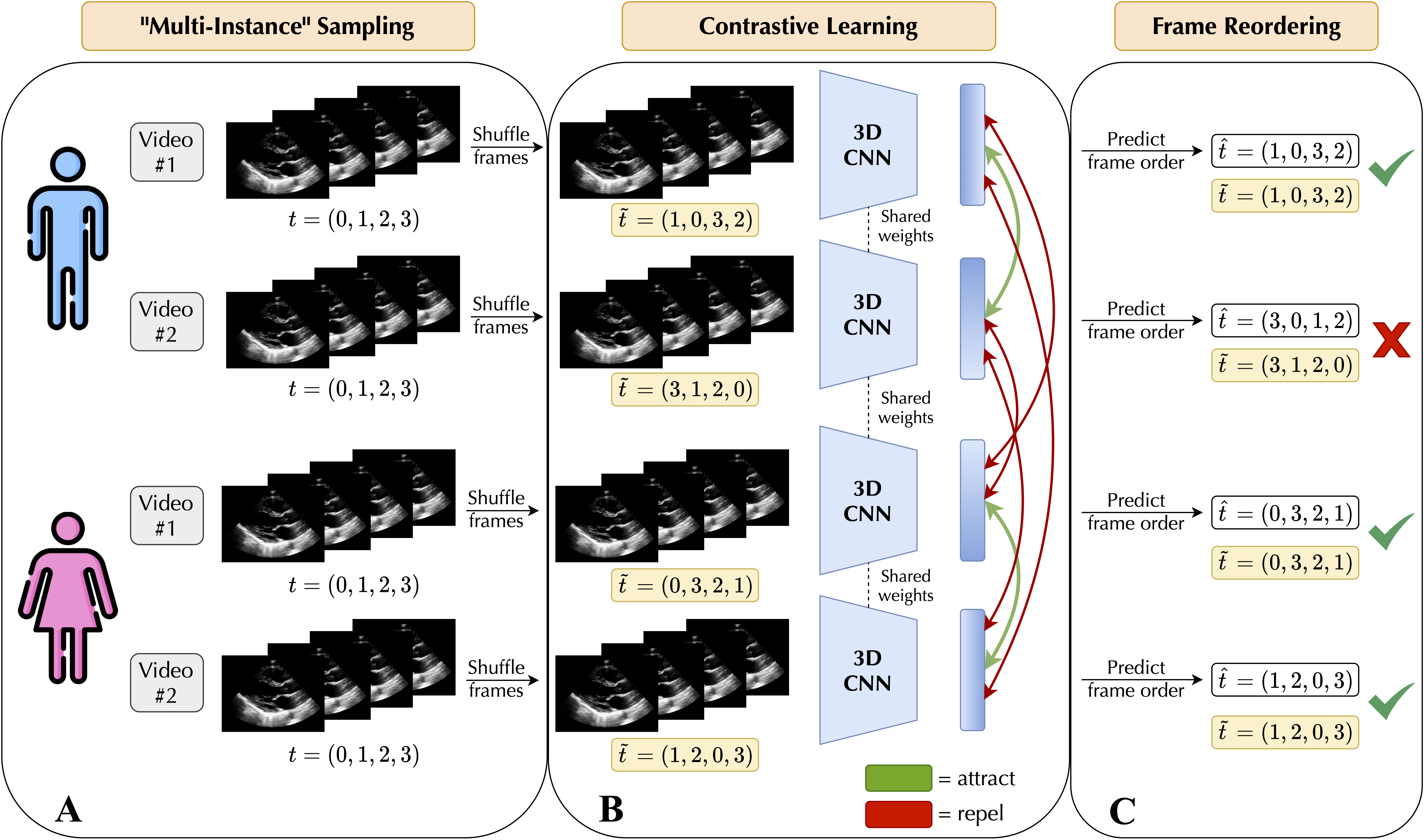Self-supervised contrastive learning of echocardiogram videos enables label-efficient cardiac disease diagnosis
Advances in self-supervised learning (SSL) have shown that self-supervised pretraining on medical imaging data can provide a strong initialization for downstream supervised classification and segmentation. Given the difficulty of obtaining expert labels for medical image recognition tasks, such an "in-domain" SSL initialization is often desirable due to its improved label efficiency over standard transfer learning. However, most efforts toward SSL of medical imaging data are not adapted to video-based medical imaging modalities. With this progress in mind, we developed a self-supervised contrastive learning approach, EchoCLR, catered to echocardiogram videos with the goal of learning strong representations for efficient fine-tuning on downstream cardiac disease diagnosis. EchoCLR leverages (i) distinct videos of the same patient as positive pairs for contrastive learning and (ii) a frame re-ordering pretext task to enforce temporal coherence. When fine-tuned on small portions of labeled data (as few as 51 exams), EchoCLR pretraining significantly improved classification performance for left ventricular hypertrophy (LVH) and aortic stenosis (AS) over other transfer learning and SSL approaches across internal and external test sets. For example, when fine-tuning on 10% of available training data (519 studies), an EchoCLR-pretrained model achieved 0.72 AUROC (95% CI: [0.69, 0.75]) on LVH classification, compared to 0.61 AUROC (95% CI: [0.57, 0.64]) with a standard transfer learning approach. Similarly, using 1% of available training data (53 studies), EchoCLR pretraining achieved 0.82 AUROC (95% CI: [0.79, 0.84]) on severe AS classification, compared to 0.61 AUROC (95% CI: [0.58, 0.65]) with transfer learning. EchoCLR is unique in its ability to learn representations of medical videos and demonstrates that SSL can enable label-efficient disease classification from small, labeled datasets.
PDF Abstract





